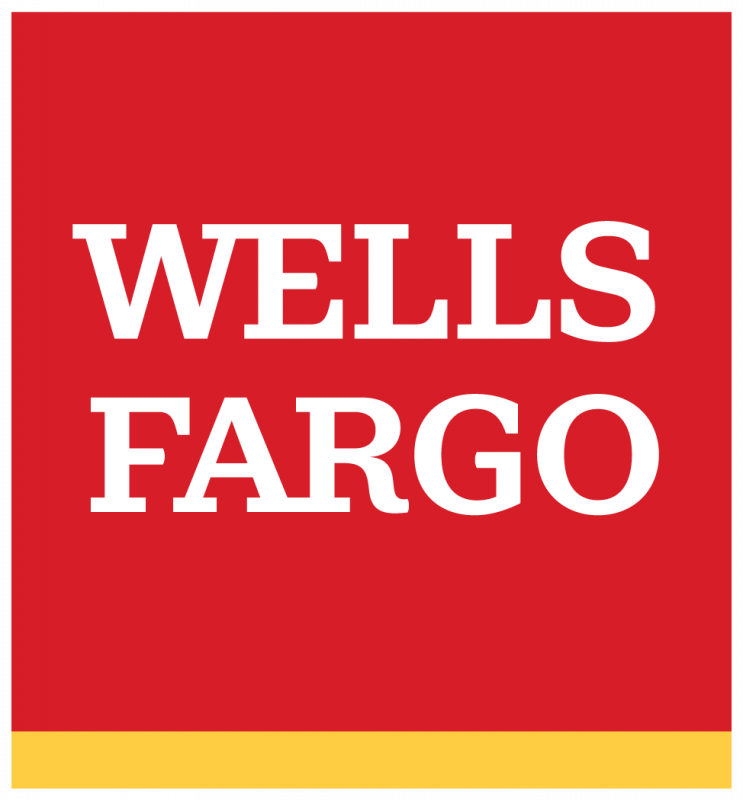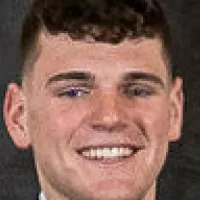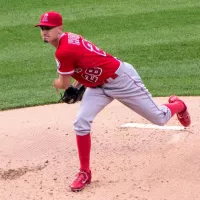Bank of America is a multinational investment bank and financial services company headquartered in Charlotte, North Carolina. Formed in 1998 through the merger of NationsBank and Bank of America, it is the second-largest bank in the U.S. and the world by market capitalization, after JPMorgan Chase. As one of the Big Four banking institutions in the United States and a systemically important financial institution, it holds approximately 10% of American bank deposits. Its roots trace back to 1784 with the Massachusetts Bank and to Amadeo Pietro Giannini's Bank of Italy, established in 1904 to serve Italian immigrants. Giannini's acquisition of Banca d'America e d'Italia led to the Bank of America name.
October 17, 1904: Amadeo Giannini Founded the Bank of Italy
On October 17, 1904, Amadeo Giannini founded the Bank of Italy in San Francisco.
1904: Bank of Italy Founded
In 1904, Amadeo Pietro Giannini founded the Bank of Italy in San Francisco to serve Italian immigrants facing discrimination.
1909: First Branch Outside San Francisco
In 1909, shortly after California's legislation allowed branch banking, Giannini established the bank's first branch outside San Francisco in San Jose.
1918: Bancitaly Corporation Organized
In 1918, A. P. Giannini organized Bancitaly Corporation, which acquired stocks of various banks in New York City and foreign countries.
1922: Giannini Acquires Banca d'America e d'Italia
In 1922, Giannini acquired Banca d'America e d'Italia, later doing business as Bank of America.
1922: Establishment of Bank of America, Los Angeles
In 1922, the Bank of America, Los Angeles, was established with Giannini as a minority investor.
1923: Foundation of Bank of America, Los Angeles
In 1923, Bank of America, Los Angeles, was founded in California.
1928: Merger of Giannini's Bank and Bank of America, Los Angeles
In 1928, Giannini merged his bank with the Bank of America, Los Angeles, headed by Orra E. Monnette.
1928: Merger of the Bank of Italy and Bank of America, Los Angeles
In 1928, the Bank of Italy and Bank of America, Los Angeles, merged and consolidated with other bank holdings.
1928: Bank of Italy Acquires Bank of America, Los Angeles
In 1928, the Bank of Italy of San Francisco acquired Bank of America, Los Angeles.
1928: Opening of the Industrial Trust Building
In 1928, the Industrial Trust Building opened, later known as the Industrial National Bank building and the Fleet Bank building. This building remains the tallest in Rhode Island.
1929: Bank's Extensive Branch Network
By 1929, the bank had 453 banking offices in California with aggregate resources of over US$1.4 billion.
1953: Separation of Transamerica Corporation and Bank of America
In 1953, regulators enforced the separation of Transamerica Corporation and Bank of America under the Clayton Antitrust Act.
1956: Establishment of BankAmerica Corporation
Following the passage of the Bank Holding Company Act of 1956, BankAmerica Corporation was established to own and operate Bank of America and its subsidiaries.
1956: Passage of the Bank Holding Company Act
In 1956, the Bank Holding Company Act prohibited banks from owning non-banking subsidiaries, leading to the separation of Bank of America and Transamerica.
1958: Introduction of BankAmericard
In 1958, Bank of America introduced the BankAmericard, a credit card linked directly to bank accounts.
1958: Commercial National Bank Merges with American Trust Company
In 1958, Commercial National Bank in Charlotte merged with American Trust Company to form American Commercial Bank.
1966: Introduction of Interbank/Master Charge
In 1966, Interbank was introduced by a coalition of regional bankcard associations to compete with BankAmericard. Interbank later became Master Charge in 1966 and then Mastercard in 1979.
February 1970: Attacks on Bank of America Branches
Beginning in February 1970, there were numerous attacks on Bank of America branches in California, including the burning of the Isla Vista branch during a riot.
September 1971: End of Attacks on Bank of America Branches
By September 1971, there had been 66 attacks on Bank of America branches in California since February 1970, including bombings and arson, resulting in approximately $500,000 in property damage.
1977: BankAmericard Renamed to Visa
In 1977, BankAmericard was renamed to Visa.
1979: Master Charge became Mastercard
In 1979, Master Charge became Mastercard.
1983: Acquisition of Seafirst Corporation
In 1983, Bank of America expanded outside California by acquiring Seafirst Corporation in Seattle, which was at risk of seizure by the federal government. Seafirst continued to operate as Seafirst until the 1998 merger with NationsBank.
1986: BankAmerica CEO Fired
In 1986, BankAmerica fired its CEO, Sam Armacost, due to huge losses caused by bad loans. A. W. (Tom) Clausen was appointed to replace Armacost.
1987: Decline of BankAmerica Stock
In 1987, BankAmerica experienced huge losses due to bad loans, leading to a decline in its stock price and making it vulnerable to a hostile takeover. By the time of the 1987 stock-market crash, BankAmerica's share price had fallen to $8.
1991: Merger with C&S/Sovran Corporation
In 1991, North Carolina National Bank merged with C&S/Sovran Corporation of Atlanta and Norfolk to form NationsBank.
1992: Rebound of BankAmerica Stock
By 1992, BankAmerica's stock had rebounded from its low in 1987 to become one of the biggest gainers of that half-decade.
1992: Acquisition of Security Pacific Corporation
In 1992, BankAmerica acquired Security Pacific Corporation and its subsidiary Security Pacific National Bank, representing the largest bank acquisition at the time. However, regulators forced the sale of part of Security Pacific's Washington subsidiary.
1996: Acquisition of First Interstate Bancorp by Wells Fargo
In 1996, Wells Fargo and Company acquired First Interstate Bancorp, which had originated from Bank of America's domestic banks outside California.
1997: Acquisition of Robertson Stephens
In 1997, BankAmerica acquired Robertson Stephens, a San Francisco–based investment bank specializing in high technology, for $540 million. Robertson Stephens was integrated into BancAmerica Securities and renamed "BancAmerica Robertson Stephens".
1997: BankAmerica Fell to Second Place
In 1997, BankAmerica fell to second place behind North Carolina's fast-growing NationsBank Corporation in terms of deposits among U.S. bank holding companies.
1997: BankAmerica lends to D. E. Shaw & Co.
In 1997, BankAmerica provided a $1.4 billion loan to investment management firm D. E. Shaw & Co. for the purpose of running various businesses on behalf of the bank.
1998: Banc of America Securities (BAS) Subsidiary Founding
In 1998, Banc of America Securities (BAS) was founded following a strategy pioneered by Citigroup that combines corporate lending with investment banking advice and services.
1998: Banc of America Securities LLC (BAS) Founded
In 1998, Banc of America Securities LLC (BAS), the investment banking subsidiary of BoA, was founded. The company competed in both the domestic and international equity and investment banking markets.
1998: Bank of America Possesses Combined Assets
In 1998, Bank of America possessed combined assets of $570 billion, as well as 4,800 branches in 22 U.S. states. Federal regulators insisted only upon the divestiture of 13 branches in New Mexico, which were sold to BOK Financial Corporation. The broker-dealer, NationsBanc Montgomery Securities, was named Banc of America Securities in 1998.
1998: BankAmerica Fell to Third Place
In 1998, BankAmerica fell to third place behind First Union Corp.
1998: BankAmerica Acquired by NationsBank
In 1998, BankAmerica suffered losses and was acquired by Charlotte-based NationsBank for $62 billion, forming the Bank of America Corporation.
1998: BankAmerica Merger
In 1998, NationsBank acquired BankAmerica and while NationsBank was the nominal survivor, the merged bank took the better-known name of Bank of America. The holding company was renamed Bank of America Corporation, while NationsBank, N.A., merged with Bank of America NT&SA to form Bank of America, N.A. as the remaining legal bank entity.
1998: Merger of NationsBank and Bank of America
In 1998, NationsBank and Bank of America merged to form Bank of America Corporation, a multinational investment bank and financial services holding company.
1998: NationsBank Acquires BankAmerica
In 1998, NationsBank of Charlotte acquired BankAmerica in what was the largest bank acquisition in history at that time. D.E. Shaw suffered significant losses during the 1998 Russian financial crisis.
1998: Merger with NationsBank
Seafirst operated as a Bank of America subsidiary until the 1998 merger with NationsBank.
2001: Equities derivative deal
In 2001, Innes was instrumental in a deal kept private that generated $100 million in fees for the bank.
2001: McColl steps down as CEO
In 2001, McColl stepped down as CEO of Bank of America, naming Ken Lewis as his successor.
2002: Chris Innes Leads Equities and Derivatives Group
In 2002, Chris Innes took over the equities and derivatives group at Banc of America Securities (BAS).
2004: Discrimination against qualified African-American and Latino borrowers
From 2004 to 2008, there was discrimination against qualified African-American and Latino borrowers.
2004: Bank of America Leases the Industrial Trust Building
In 2004, Bank of America leased the Industrial Trust Building (formerly Industrial National Bank building and Fleet Bank building).
June 30, 2005: Bank of America to Purchase MBNA
On June 30, 2005, Bank of America announced it would purchase credit card giant MBNA for $35 billion in cash and stock.
December 15, 2005: Federal Reserve Approves Bank of America and MBNA Merger
On December 15, 2005, the Federal Reserve Board gave final approval to the merger between Bank of America and MBNA.
January 1, 2006: Bank of America and MBNA Merger Closes
On January 1, 2006, the merger between Bank of America and MBNA closed. The combined Bank of America Card Services organization, including the former MBNA, had more than 40 million U.S. accounts and nearly $140 billion in outstanding balances.
May 2006: Bank of America and Banco Itaú Enter Acquisition Agreement
In May 2006, Bank of America and Banco Itaú entered into an acquisition agreement, through which Itaú agreed to acquire BankBoston's operations in Brazil and was granted an exclusive right to purchase Bank of America's operations in Chile and Uruguay.
August 2006: Bank of America and Banco Itaú Deal Signed
In August 2006, the deal between Bank of America and Banco Itaú was signed.
November 20, 2006: Bank of America to Purchase The United States Trust Company
On November 20, 2006, Bank of America announced the purchase of The United States Trust Company for $3.3 billion from the Charles Schwab Corporation.
2006: Chris Innes Departs Banc of America Securities
In 2006, Chris Innes left his role at Banc of America Securities.
July 1, 2007: Bank of America Closes Deal for The United States Trust Company
On July 1, 2007, the deal between Bank of America and The United States Trust Company closed.
August 23, 2007: Bank of America Announces Repurchase Agreement for Countrywide Financial
On August 23, 2007, Bank of America announced a $2 billion repurchase agreement for Countrywide Financial. This purchase of preferred stock was arranged to provide a return on investment of 7.25% per annum and provided the option to purchase common stock at a price of $18 per share.
September 14, 2007: Bank of America Wins Approval to Acquire LaSalle Bank Corporation
On September 14, 2007, Bank of America won approval from the Federal Reserve to acquire LaSalle Bank Corporation from ABN AMRO for $21 billion. With this purchase, Bank of America possessed $1.7 trillion in assets.
2007: Banc of America Securities Downsizes International Operations
During 2007, Banc of America Securities (BAS) significantly downsized its international operations, eliminating a number of industry groups in Europe, as well as cutting numerous banking and sales and trading positions in North America and Asia.
December 31, 2007: Countrywide Mortgage Servicing
As of December 31, 2007, Countrywide provided mortgage servicing for nine million mortgages valued at $1.4 trillion.
January 11, 2008: Bank of America to Buy Countrywide Financial
On January 11, 2008, Bank of America announced that it would buy Countrywide Financial for $4.1 billion.
January 2008: Bank of America Raises Interest Rates
In January 2008, Bank of America began notifying customers that their interest rates were being more than doubled, up to 28%, even without payment problems. This action was criticized for raising rates on customers in good standing.
March 2008: FBI Investigates Countrywide for Possible Fraud
In March 2008, it was reported that the Federal Bureau of Investigation (FBI) was investigating Countrywide for possible fraud relating to home loans and mortgages.
May 5, 2008: LaSalle Bank Branches Adopt Bank of America Name
On May 5, 2008, LaSalle Bank and LaSalle Bank Midwest branches adopted the Bank of America name.
July 2008: Bank of America Completes Acquisition of Countrywide Financial
In July 2008, Bank of America completed the acquisition of Countrywide Financial, giving the bank a substantial market share of the mortgage business and access to Countrywide's resources for servicing mortgages.
September 14, 2008: Bank of America to Purchase Merrill Lynch & Co., Inc.
On September 14, 2008, Bank of America announced its intention to purchase Merrill Lynch & Co., Inc. in an all-stock deal worth approximately $50 billion.
October 3, 2008: John Thain to Lead Combined Bank of America/Merrill Lynch
On October 3, 2008, Bank of America announced that John Thain would lead the combined Bank of America/Merrill Lynch Global Corporate and Investment Banking enterprise.
December 5, 2008: Shareholders Approve Bank of America and Merrill Lynch Acquisition
On December 5, 2008, shareholders of both companies approved the acquisition of Merrill Lynch by Bank of America.
December 2008: Merrill Lynch Bonuses Controversy
In December 2008, Bank of America approved bonuses at Merrill Lynch before the merger but did not disclose them to its shareholders when the shareholders were considering approving the acquisition, leading to a controversy.
2008: Lawsuits and Investigations Regarding Mortgages and Financial Disclosures
Dating back to the 2008 financial crisis, Bank of America's large market share, business activities, and economic impact have led to numerous lawsuits and investigations regarding both mortgages and financial disclosures.
2008: Discrimination against qualified African-American and Latino borrowers
From 2004 to 2008, there was discrimination against qualified African-American and Latino borrowers.
2008: Bank of America Awarded Project Finance Deal of the Year
In 2008, Bank of America was awarded the Project Finance Deal of the Year at the ALB Hong Kong Law Awards.
2008: BoA merged with Merrill Lynch
In 2008, BoA was merged with Merrill Lynch. Banc of America Securities LLC (BAS) was the investment banking subsidiary of BoA from 1998 until the merger.
2008: Establishment of Merrill Lynch for Wealth Management
In 2008, Merrill Lynch was established for wealth management as part of a series of mergers and acquisitions by Bank of America.
January 1, 2009: Bank of America and Merrill Lynch Deal Closes
On January 1, 2009, the deal between Bank of America and Merrill Lynch closed.
January 16, 2009: Bank of America Reveals Massive Losses at Merrill Lynch
On January 16, 2009, Bank of America's earnings release revealed massive losses at Merrill Lynch in the fourth quarter, necessitating a government infusion of money. Merrill recorded a $21.5 billion operating loss, and Bank of America tried to abandon the deal in December, but was compelled by the U.S. government to complete the merger. The bank's stock price sank to its lowest level in 17 years.
January 22, 2009: John Thain Forced Out
On January 22, 2009, John Thain was forced out by Bank of America Chairman Kenneth D. Lewis because of the colossal losses visited on B of A due to its acquisition of Merrill Lynch. Brian Moynihan became president of Global Banking and Global Wealth and Investment Management.
March 15, 2009: Bank of America Receives Additional Bailout Money
On March 15, 2009, according to The New York Times, Bank of America received an additional $5.2 billion in government bailout money via the bailout of American International Group.
July 2009: Bank of America and Parmalat SpA announced settlement
In July 2009, Bank of America and Parmalat SpA announced a settlement in which Bank of America would pay Parmalat $98.5 million in October 2009. Parmalat had sued Bank of America for $10 billion following its 2003 bankruptcy.
August 3, 2009: Bank of America Fined for Non-Disclosure of Merrill Lynch Bonuses
On August 3, 2009, Bank of America agreed to pay a $33 million fine to the SEC over the non-disclosure of an agreement to pay up to $5.8 billion of bonuses at Merrill Lynch. The bank approved the bonuses before the merger but did not disclose them to its shareholders when the shareholders were considering approving the Merrill acquisition in December 2008.
September 2009: Customer Criticizes Bank of America in Viral Video
In September 2009, Ann Minch, a Bank of America credit card customer, posted a video on YouTube criticizing the bank for raising her interest rate. The video went viral, leading to the bank lowering her rate and attracting national attention.
October 2009: Bank of America paid Parmalat $98.5 million in settlement
In October 2009, Bank of America paid Parmalat $98.5 million as part of a settlement announced in July 2009, resolving Parmalat's lawsuit against the bank following Parmalat's bankruptcy in 2003.
October 2009: WikiLeaks Claims Possession of Bank of America Executive's Hard Drive
In October 2009, Julian Assange of WikiLeaks claimed his organization possessed a 5 gigabyte hard drive formerly used by a Bank of America executive and intended to publish its contents.
December 2, 2009: Bank of America Announces TARP Repayment
On December 2, 2009, Bank of America announced it would repay the entire $45 billion it received in TARP and exit the program, using $26.2 billion of excess liquidity along with $18.6 billion to be gained in "common equivalent securities".
2009: Establishment of Bank of America Merrill Lynch
In 2009, Bank of America Merrill Lynch for investment banking was established through mergers and acquisitions, later renamed BofA Securities.
2009: Investment Banking Operations Move to Bank of America Tower
In 2009, the bulk of Banc of America Securities investment banking operations moved to the Bank of America Tower at Bryant Park in New York City, a $1 billion, 58-story skyscraper.
2009: Temasek Holdings Sells Stake in Bank of America
In the first quarter of 2009, Temasek Holdings sold its whole stake in Bank of America, taking a loss Reuters estimated at $3 billion.
December 31, 2009: Ken Lewis to Retire as CEO of Bank of America
Ken Lewis announced his retirement as CEO of Bank of America, effective December 31, 2009, due in part to controversy and legal investigations concerning the purchase of Merrill Lynch.
January 1, 2010: Brian Moynihan Becomes CEO of Bank of America
On January 1, 2010, Brian Moynihan became president and CEO of Bank of America, succeeding Ken Lewis.
February 1, 2010: Trial Date Set for Bank of America Settlement Case
On February 1, 2010, a judge ordered the parties involved in the Bank of America settlement case to prepare for trial, which was scheduled to begin no later than this date. The judge criticized the settlement, stating that the fine would be paid by the bank's shareholders, who were the ones injured by the lack of disclosure.
February 2010: Revised Settlement Approved in SEC v. Bank of America Corp.
In February 2010, a judge approved a revised settlement in the SEC v. Bank of America Corp. case with a $150 million fine, calling the accord "half-baked justice at best" and "inadequate and misguided". The fine was to be distributed only to Bank of America shareholders harmed by the non-disclosures.
November 2010: Assange Announces Intent to Expose Major U.S. Bank; Bank of America Stock Drops
In November 2010, Forbes published an interview with Julian Assange in which he stated his intent to publish information that would turn a major U.S. bank "inside out". Following this announcement, Bank of America stock dropped 3.2%.
December 2010: Bank of America Blocks Transfers to WikiLeaks
In December 2010, Bank of America announced it would no longer service requests to transfer funds to WikiLeaks, stating this decision was based on the belief that WikiLeaks may be engaged in activities inconsistent with the bank's internal policies.
2010: Completion of 1 Bank of America Center in Charlotte
In 2010, Bank of America completed construction of 1 Bank of America Center in Charlotte center city. The tower, along with an accompanying hotel, is a LEED-certified building.
2010: Bank of America Criticized for Property Seizures
In 2010, Bank of America faced criticism for allegedly seizing three properties not under their ownership due to incorrect addresses on legal documents.
2010: Arizona Investigates Bank of America for Misleading Homeowners
In 2010, the state of Arizona launched an investigation into Bank of America for allegedly misleading homeowners seeking mortgage loan modifications, with the attorney general claiming the bank "repeatedly has deceived" mortgagors.
January 2011: SEC Registration of Banc of America Securities Terminated
In January 2011, after the merger was closed, the SEC Registration of Banc of America Securities was terminated.
January 2011: Bankers and Brokers Under Investigation
As of January 2011, other bankers and brokers are under indictment or investigation related to the U.S. government's accusation that Bank of America defrauded schools, hospitals, and local government organizations via misconduct and illegal activities involving the investment of proceeds from municipal bond sales in 2010.
March 14, 2011: Anonymous released emails from former Bank of America employee
On March 14, 2011, the hacker group Anonymous began releasing emails said to be from a former Bank of America employee, Brian Penny. Anonymous claimed the emails documented alleged "corruption and fraud".
April 18, 2011: Bank of America acquitted of charges related to Parmalat fraud
On April 18, 2011, an Italian court acquitted Bank of America and three other large banks, along with their employees, of charges they assisted Parmalat in concealing its fraud and of lacking sufficient internal controls to prevent such frauds.
August 2011: Bank of America was sued for $10 billion by AIG over mortgage debt
In August 2011, Bank of America was sued for $10 billion by American International Group (AIG) over an alleged "massive fraud" on mortgage debt, adding to legal challenges related to mortgage-backed securities.
August 2011: WikiLeaks Claims Bank of America Leaks Were Deleted
Sometime before August 2011, WikiLeaks claimed that 5 GB of Bank of America leaks was part of the deletion of over 3500 communications by Daniel Domscheit-Berg, a former WikiLeaks volunteer.
December 2011: Bank of America's Financial Wealth Ranked 91st by Forbes
In December 2011, Forbes ranked Bank of America's financial wealth 91st out of the nation's largest 100 banks and thrift institutions.
February 9, 2012: Largest mortgage servicers agreed to historic settlement with the federal government and 49 states
On February 9, 2012, the five largest mortgage servicers, including Bank of America, agreed to a historic settlement with the federal government and 49 states. The settlement, known as the National Mortgage Settlement (NMS), required the servicers to provide about $26 billion in relief to distressed homeowners.
September 2012: Bank of America settled shareholder lawsuit over Merrill Lynch purchase
In September 2012, Bank of America settled out of court for $2.4 billion in a class action lawsuit filed by BofA shareholders who felt they were misled about the purchase of Merrill Lynch.
October 24, 2012: Lawsuit Filed Against Bank of America Over Toxic Mortgages
On October 24, 2012, the top federal prosecutor in Manhattan filed a lawsuit alleging that Bank of America fraudulently cost American taxpayers more than $1 billion when Countrywide Financial sold toxic mortgages to Fannie Mae and Freddie Mac.
2012: Bank of America Cuts Jobs Amidst Declining Revenue
In 2012, Bank of America cut around 16,000 jobs due to declining revenue from new regulations and a slow economy.
2012: Bank of America's Lease Ends at the Industrial Trust Building
In 2012, Bank of America's lease ended at the Industrial Trust Building, also known as the Superman Building.
March 2013: Industrial Trust Building Vacant
As of March 2013, the Industrial Trust Building (formerly Industrial National Bank building, Fleet Bank building and Bank of America Building) has been vacant.
2013: Death of Intern Sparks Debate on Working Hours
In 2013, an intern in Bank of America's London office was found dead. The intern had reportedly worked until 6 a.m. for three days prior, sparking debate about working hours at the firm. Rival firm Goldman Sachs responded by capping intern hours.
March 2014: Bank of America settled mortgage fraud suit for $6.3 billion
In March 2014, Bank of America settled a mortgage fraud suit by agreeing to pay $6.3 billion to Fannie Mae and Freddie Mac and to buy back around $3.2 billion worth of mortgage bonds.
April 7, 2014: Bank of America and QBE settled a class-action lawsuit stemming from the email leak
On April 7, 2014, Bank of America and QBE settled a class-action lawsuit for $228 million, stemming from the email leak from a former employee that had been released by Anonymous in March 2011.
April 2014: Settlement reached with former Bank of America CFO Joe L. Price
In April 2014, a $7.5 million settlement was reached with Joe L. Price, former chief financial officer for Bank of America, over allegations that the bank's management withheld material information related to its 2008 merger with Merrill Lynch.
April 2014: CFPB ordered Bank of America to provide relief to consumers harmed by credit card practices
In April 2014, the Consumer Financial Protection Bureau (CFPB) ordered Bank of America to provide an estimated $727 million in relief to consumers harmed by practices related to credit card add-on products, which affected roughly 1.4 million customers due to deceptive marketing.
August 2014: Bank of America Agrees to Settle Claims for Toxic Mortgage-Linked Securities
In August 2014, Bank of America agreed to a near–$17 billion deal to settle claims against it relating to the sale of toxic mortgage-linked securities, including subprime home loans. They agreed to pay $9.65 billion in fines, and $7 billion in relief.
August 2014: Bank of America agreed to a $16.65 billion agreement with the United States Department of Justice
In August 2014, Bank of America and the United States Department of Justice agreed to a $16.65 billion agreement over the sale of risky, mortgage-backed securities before the Great Recession, involving loans transferred from acquisitions of Merrill Lynch and Countrywide in 2008.
2014: Bank of America Focuses on Mobile Banking
As of 2014, Bank of America had 31 million active online users and 16 million mobile users. Its retail banking branches decreased to 4,900 due to increased mobile banking use.
April 2015: Competition Commission Investigates Bank of America for Cartel Conduct
In April 2015, the Competition Commission initiated an investigation into Bank of America and other major banks, including Barclays Bank Plc, CitiGroup Inc, and JP Morgan Chase & Co, for alleged cartel conduct in the foreign currency exchange market affecting the South African rand. The investigation focused on price fixing related to bids, offers, and bid-offer spreads in spot, futures, and forwards currency trades, distorting foreign exchange prices.
May 6, 2015: Bank of America Reduces Financial Exposure to Coal Companies
On May 6, 2015, Bank of America announced it would reduce its financial exposure to coal companies, following pressure from universities and environmental groups. This was part of the bank's decision to continue reducing credit exposure to the coal mining sector.
May 23, 2016: Court Rules on Bank of America Fraud Case
On May 23, 2016, the Second U.S. Circuit Court of Appeals ruled that the finding of fact by the jury in the 'Hustle' case supported only "intentional breach of contract", not a fraud, in relation to low-quality mortgages supplied by Countrywide to Fannie Mae and Freddie Mac.
January 2018: Bank of America announced retail expansion into Pittsburgh
In January 2018, Bank of America announced an organic expansion of its retail footprint into Pittsburgh and surrounding areas. This expansion supplemented its existing commercial lending and investment businesses in the area, where PNC Financial Services held a commanding market share.
February 2018: Bank of America announced expansion into Ohio
In February 2018, Bank of America announced its expansion into Ohio across the state's three biggest cities: Cleveland, Columbus, and Cincinnati, which are strongholds of Chase. Columbus served as the bank's hub in Ohio due to its central location as the state's capital and its overall size and growth.
April 2018: Bank of America to Stop Financing Military-Style Weapons
In April 2018, Bank of America announced that it would stop providing financing to makers of military-style weapons such as the AR-15 rifle.
June 2018: Bank of America Sales
As of June 2018, Bank of America garnered $102.98 billion in sales.
August 2018: Bank of America Market Capitalization
As of August 2018, Bank of America has a $313.5 billion market capitalization, making it the 13th largest company in the world.
2018: Bank of America's Investment Bank Ranking
As of 2018, Bank of America's investment bank was considered within the "bulge bracket" as the world's third-largest investment bank. Also in 2018, its wealth management unit managed $1.08 trillion in assets under management (AUM) as the second-largest wealth manager in the world, after UBS.
2018: Growth in Mobile Users for Bank of America
By 2018, Bank of America's number of mobile users increased to 25.3 million and the number of locations fell to 4,411 at the end of June.
2018: Omeed Malik Files Arbitration Case and Receives Settlement
In 2018, Omeed Malik, a former senior executive, filed a $100 million arbitration case against Bank of America through FINRA, alleging sexual misconduct investigation, retaliation, breach of contract, and discrimination. Malik received an eight-figure settlement in July 2018.
April 9, 2019: Bank of America announced minimum wage increase
On April 9, 2019, Bank of America announced an increase in the minimum wage to $17.00 an hour, beginning on May 1, 2019, with a goal of reaching $20.00 an hour in 2021.
May 1, 2019: Bank of America increased minimum wage to $17.00 an hour
On May 1, 2019, Bank of America began increasing its minimum wage to $17.00 an hour, as part of a plan announced in April 2019 to reach $20.00 an hour by 2021.
January 2020: Bank of America hired new advisors to assist ultra-wealthy clients
In January 2020, Bank of America expanded its services by hiring new advisors whose primary functions are to assist ultra-wealthy clients, enhancing its wealth management offerings.
2020: Bank of America Ranks on Fortune 500
In 2020, Bank of America was ranked No. 25 on the Fortune 500 rankings of the largest US corporations by total revenue.
January 6, 2021: Bank of America Criticized for Sharing Customer Data After US Capitol Events
Following the events of January 6, 2021, at the US Capitol, Bank of America was criticized and faced a congressional investigation for allegedly handing over extensive private profile information of customers who shopped at Cabela's, rented hotels in Virginia, or used ATMs in DC between January 5-7, 2021.
March 2022: Ryan Coogler Incident at Bank of America
In March 2022, filmmaker Ryan Coogler was wrongly targeted as a bank robber and detained by police in Atlanta after trying to withdraw cash at a Bank of America branch. He was later released after verifying his identity. The bank issued an apology.
2023: Bank of America Accused of Terminating Accounts Based on Religious or Political Views
In 2023, Bank of America faced accusations of terminating accounts based on religious or political views, often targeting conservative causes. A Christian charity reportedly had its account terminated without explanation, leading to a shareholder action proposal.
2023: Bank of America Ranks on Forbes Global 2000
In 2023, Bank of America was ranked No. 6 on Forbes' Global 2000 rankings.
2023: Bank of America Fined for Deceptive Practices
In 2023, the Consumer Financial Protection Bureau levied $250 million in fines and compensation against Bank of America. These penalties were for deceptive practices that harmed consumers, including double charging insufficient funds fees, withholding credit card rewards, and opening unauthorized accounts.
2024: Death of Investment Banker Sparks Concerns About Working Hours
In 2024, Leo Lukensas III, a former US Army Special Forces Veteran working in investment banking at Bank of America, died following heart problems. Reports indicated a culture of excessive working hours, leading to his manager's removal from leadership.
2025: $191mm adjustment
In 2025, $100 million from 2001 is worth $191mm.
2025: Donald Trump Accuses Bank of America CEO of Political Debanking
In 2025, US President Donald Trump accused Bank of America CEO Brian Moynahan of political debanking, expressing hope that the bank would open its services to conservatives.
Mentioned in this timeline

Donald John Trump is an American politician media personality and...

Wells Fargo Company is a multinational financial services institution operating...
California is a U S state on the Pacific Coast...
India officially the Republic of India is a South Asian...

San Francisco is a major commercial financial and cultural hub...
Africa is the second-largest and second-most populous continent comprising of...
Trending

27 days ago Jaxson Dart Returns for Giants Against Patriots After Turbulent, Injury-Filled Season
3 months ago Maple Leafs-Red Wings Game Time Changed to Avoid Conflict with Blue Jays

2 months ago Donovan Clingan impresses in Preseason; Predicted to achieve Double-Double average this season.

3 months ago Gerard Butler's 'Law Abiding Citizen' resurgence: A streaming comeback 15 years later.

9 months ago Yankees seek series win after Fried's victory over Pirates, continuing homer barrage.

2 months ago Joey Bosa Lists Los Angeles Mansion for $3.7 Million Amid Bills Transition.
Popular

XXXTentacion born Jahseh Dwayne Ricardo Onfroy was a controversial yet...

Stranger Things created by the Duffer Brothers is a popular...
The Kennedy Center Honors are annual awards recognizing individuals and...
Turning Point USA TPUSA is an American nonprofit organization founded...

Candace Owens is an American conservative political commentator and author...

Bernie Sanders is a prominent American politician currently serving as...
